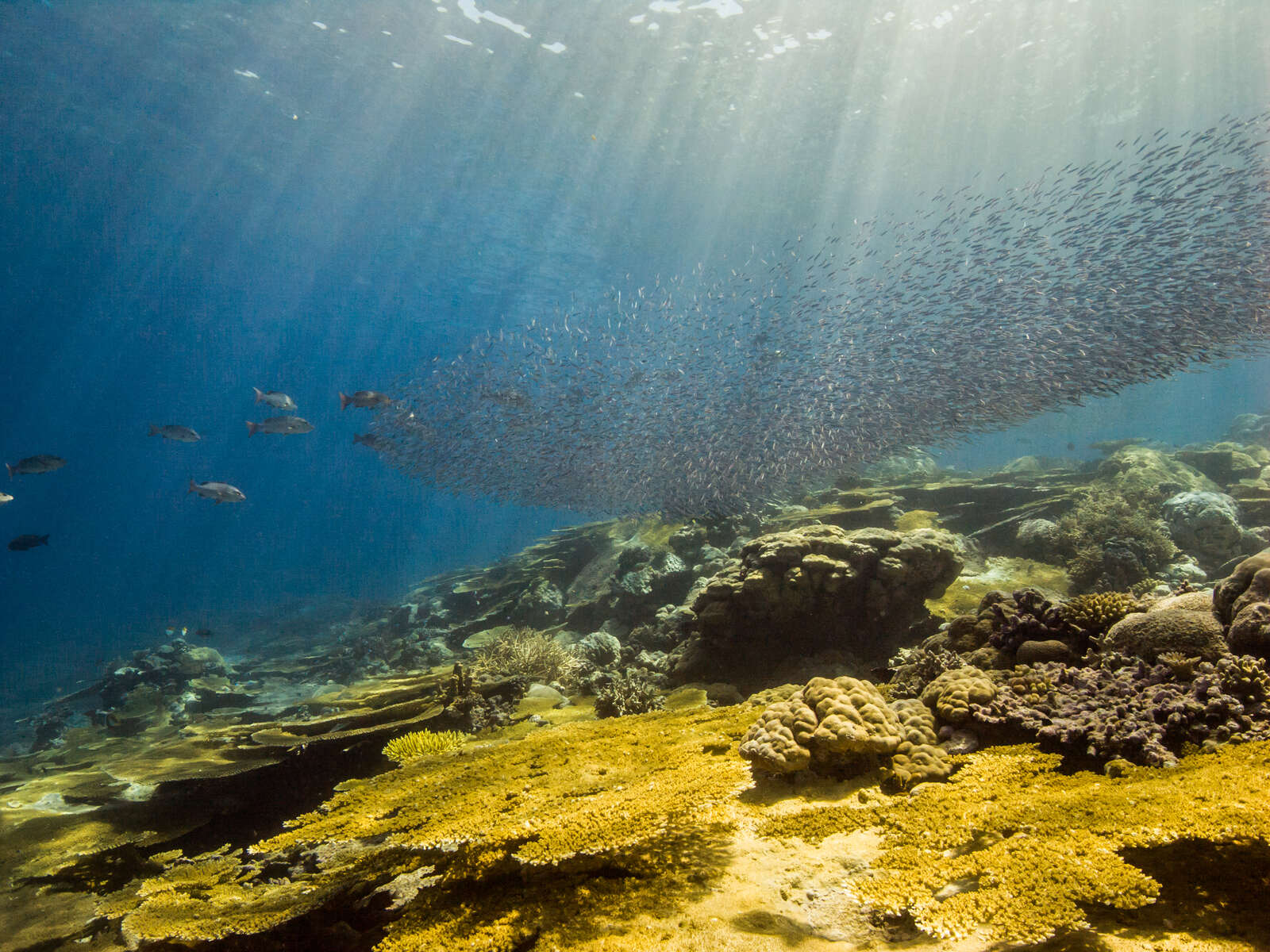
The Chagos Marine Protected Area (MPA) is a fascinating and awe-inspiring place. Nestled in the heart of the Indian Ocean, it is an oceanic paradise that boasts an incredible array of marine life and mesmerizing beauty. Established in 2010, the Chagos MPA is one of the largest marine reserves in the world, covering an area of over 640,000 square kilometers.
But what makes the Chagos MPA truly remarkable are the unbelievable facts that surround it. From extraordinary biodiversity to captivating geological formations, this protected area is a treasure trove of awe-inspiring wonders. In this article, we will explore 15 mind-blowing facts about the Chagos MPA that will leave you in awe and marvel at the beauty and importance of this marine sanctuary.
Key Takeaways:
- The Chagos Marine Protected Area is a massive ocean sanctuary with over 220 coral species and 1,000 fish species, providing a safe haven for endangered turtles and rare marine life.
- This UNESCO World Heritage Site in the Indian Ocean safeguards sharks, supports sustainable fishing, and boasts the world’s largest coral recovery rate, making it a vital refuge for marine and plant species.
The Chagos Marine Protected Area is the world’s largest no-take marine reserve.
Encompassing an area of over 640,000 square kilometers, the Chagos Marine Protected Area (MPA) is a vast expanse of oceanic wonder. Its size alone makes it an extraordinary feat of conservation.
It is home to more than 220 species of coral.
The Chagos MPA boasts an incredible array of coral species, making it one of the most biodiverse coral ecosystems in the world. Its vibrant reefs are a sight to behold.
Over 1,000 species of fish inhabit the waters of the Chagos MPA.
From colorful reef fish to larger pelagic species, the Chagos MPA supports a diverse range of marine life. It is a paradise for snorkelers, divers, and marine biologists alike.
The Chagos MPA is a nesting site for endangered sea turtles.
Green turtles, hawksbill turtles, and loggerhead turtles all rely on the Chagos MPA as a safe haven for nesting and foraging. The protection provided by the MPA is crucial for their survival.
It is teeming with rare and unique species.
From the elusive dugong to the critically endangered Chagos anemonefish, the Chagos MPA is a haven for rare and distinctive marine species. Its ecosystem is filled with surprises and discoveries waiting to be made.
The Chagos MPA safeguards important shark populations.
Sharks play a vital role in maintaining the health of marine ecosystems. The Chagos MPA provides a sanctuary for these magnificent creatures, ensuring their continued existence.
It is a UNESCO World Heritage Site.
The Chagos MPA’s exceptional biodiversity and pristine condition have earned it the prestigious status of a UNESCO World Heritage Site. It is recognized for its outstanding universal value.
The Chagos MPA is located in the Indian Ocean, south of the Maldives.
This remote and secluded region is far away from the pressures of human activity, allowing the marine life in the area to flourish undisturbed.
It is an important research site for scientists and marine biologists.
The Chagos MPA provides a unique opportunity for researchers to study the long-term impacts of conservation efforts and monitor the health of marine ecosystems. Its value as a living laboratory is immeasurable.
The Chagos MPA supports sustainable fisheries management.
By implementing effective fisheries management strategies, the Chagos MPA ensures the long-term viability of fish populations and promotes sustainable fishing practices in surrounding areas.
The Chagos MPA is a refuge for migratory birds.
During their annual migration, numerous bird species find refuge in the Chagos MPA’s islands and coastal habitats. It is a crucial stopover point on their long journeys.
It is thought to have the largest coral recovery rate in the world.
Following the implementation of strict conservation measures, the Chagos MPA has witnessed an astonishing recovery of coral reefs. This serves as an inspiring example of the resilience of marine ecosystems.
The Chagos MPA is off-limits to commercial fishing.
By prohibiting all forms of commercial fishing, the Chagos MPA ensures that its marine resources remain protected and undisturbed, safeguarding the delicate balance of the ecosystem.
It is a sanctuary for rare and endangered plant species.
The Chagos MPA is not only a haven for marine life but also a refuge for unique plant species found on its islands. Its terrestrial biodiversity is just as remarkable as its underwater world.
The Chagos MPA provides valuable ecological services.
From carbon sequestration to coastal protection, the Chagos MPA plays a crucial role in maintaining the ecological balance of the region. Its preservation is vital for the well-being of the planet.
Conclusion
The Chagos Marine Protected Area is truly a remarkable and awe-inspiring part of our planet. With its stunning biodiversity, unique ecosystems, and incredible conservation efforts, it represents a triumph in marine conservation. The fact that it is the largest no-take marine reserve in the world is a testament to the dedication and commitment of those involved in preserving this precious natural treasure.As we have explored through the 15 unbelievable facts about the Chagos Marine Protected Area, it is clear that this remarkable area is worth protecting and cherishing. From its pristine coral reefs to its abundant marine life, the Chagos archipelago is a haven for scientists and nature enthusiasts alike. The ongoing efforts to study and preserve this area will continue to provide invaluable insights into marine biology and aid in the conservation of our global oceans.By safeguarding the Chagos Marine Protected Area, we are not only protecting a unique ecosystem but also ensuring the sustainability of our planet for future generations. Let us celebrate and support the incredible work being done to preserve and honor this remarkable marine sanctuary.
FAQs
1. What is the Chagos Marine Protected Area?
The Chagos Marine Protected Area is a vast marine reserve located in the Indian Ocean, comprising of the Chagos archipelago and its surrounding waters. It is home to a diverse range of marine species and serves as a vital conservation area.
2. Why is the Chagos Marine Protected Area important?
The Chagos Marine Protected Area is important for several reasons. It supports a rich and fragile ecosystem that is home to numerous endangered and endemic species. Additionally, it helps to preserve and enhance the health of surrounding marine ecosystems, contributes to scientific research, and promotes sustainable fishing practices.
3. How big is the Chagos Marine Protected Area?
The Chagos Marine Protected Area spans an area of approximately 640,000 square kilometers, making it the largest no-take marine reserve in the world. It encompasses the Chagos Archipelago, including dozens of coral reefs and a network of deep-sea habitats.
4. Who manages the Chagos Marine Protected Area?
The Chagos Marine Protected Area is managed by the British government, with the assistance of various conservation organizations and scientific institutions. The Chagos Conservation Trust plays a significant role in monitoring and safeguarding the area’s biodiversity.
5. Can visitors access the Chagos Marine Protected Area?
No, access to the Chagos Marine Protected Area is restricted to ensure the preservation of its delicate ecosystems. It is primarily a research and conservation area, with limited visitation granted only for scientific purposes.
The Chagos Marine Protected Area showcases nature's wonders, but there's more to explore. Dive into the world of marine conservation, uncover biodiversity secrets, and learn how environmental protection efforts in places like Fernando De Noronha Archipelago make a difference. From coral reefs teeming with life to rare species finding sanctuary, these articles will take you on a journey through Earth's most precious habitats. Get ready to be amazed by the incredible stories behind the conservation work protecting our planet's future.
Was this page helpful?
Our commitment to delivering trustworthy and engaging content is at the heart of what we do. Each fact on our site is contributed by real users like you, bringing a wealth of diverse insights and information. To ensure the highest standards of accuracy and reliability, our dedicated editors meticulously review each submission. This process guarantees that the facts we share are not only fascinating but also credible. Trust in our commitment to quality and authenticity as you explore and learn with us.


